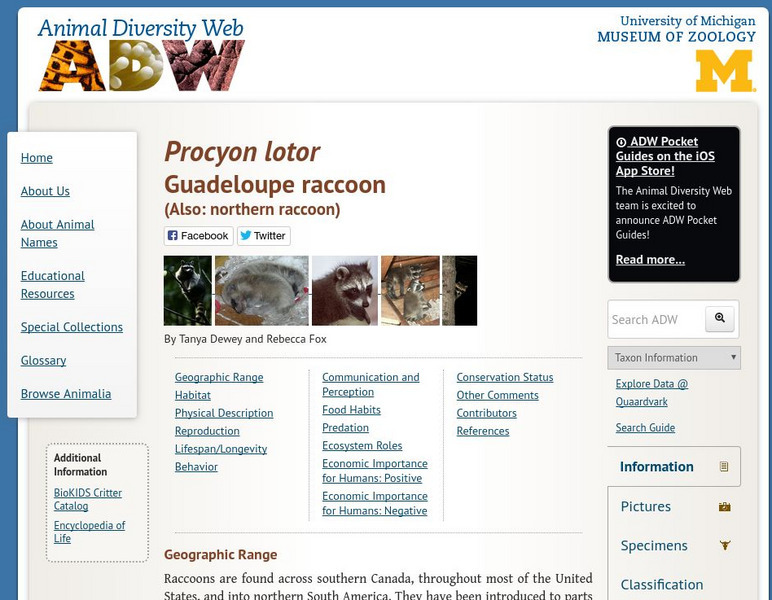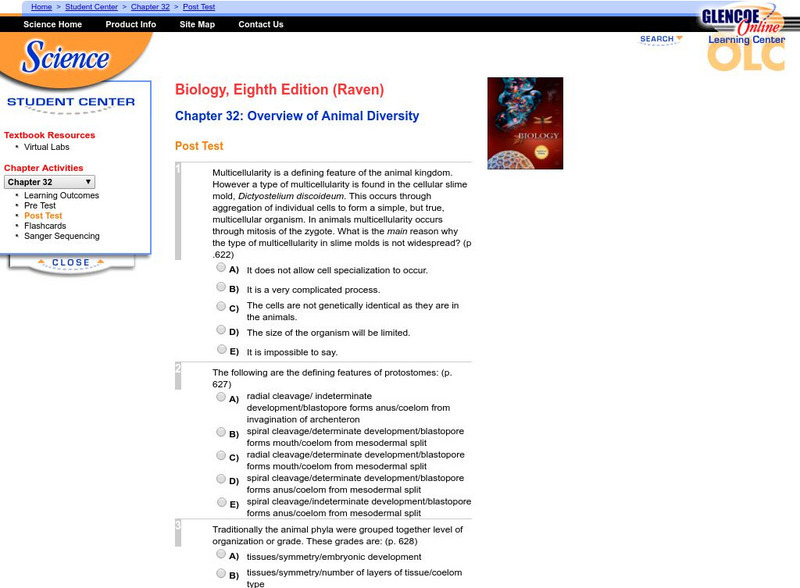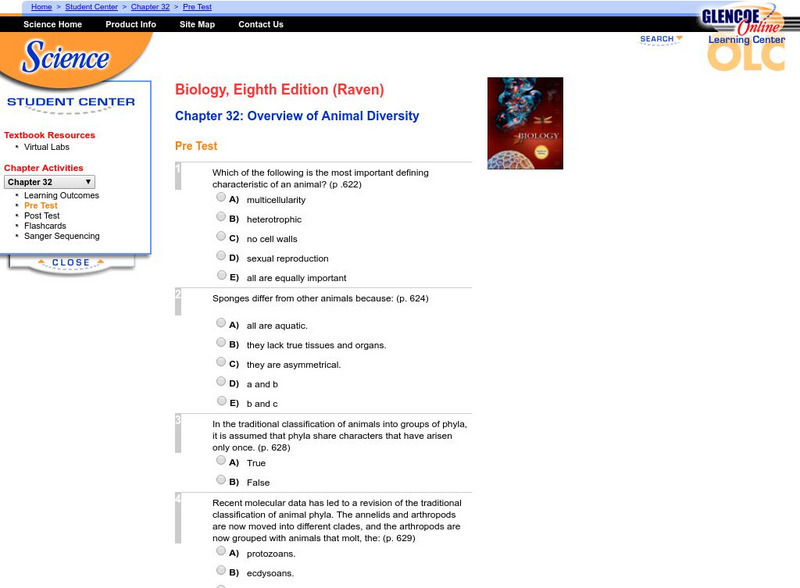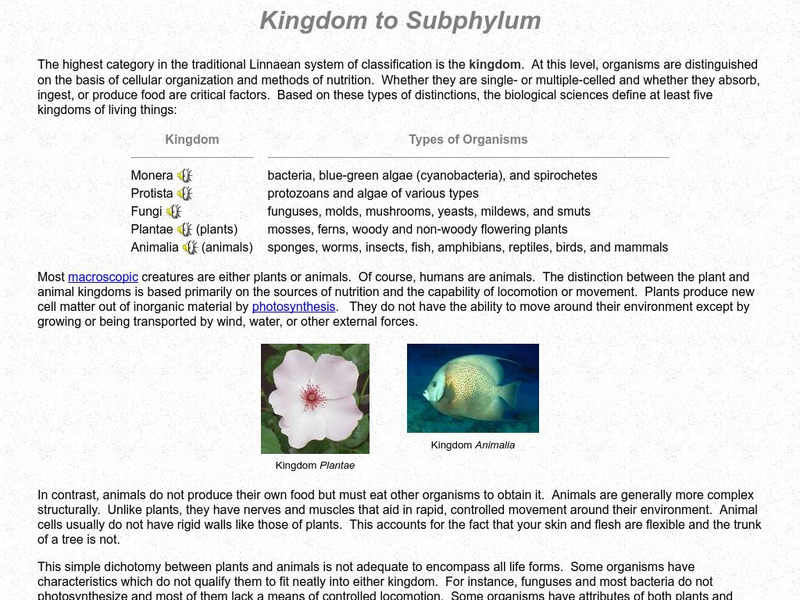Hi, what do you want to do?
Regents of the University of Michigan
Animal Diversity Web: Sitatunga
Comprehensive reference information about the sitatunga, an African antelope, including taxonomic classification, habitat, physical description, and other details.
Regents of the University of Michigan
Animal Diversity Web: Eastern Fox Squirrel
Comprehensive information about the Eastern fox squirrel is presented, including the positive and negative impacts of these small animals on humans. This page also includes excellent photographs of Eastern fox squirrels and detailed...
Regents of the University of Michigan
Animal Diversity Web: Northern Raccoon
Comprehensive reference information about the northern raccoon, including taxonomic classification, habitat, physical description, specimens, and other details.
Regents of the University of Michigan
Animal Diversity Web: Lemmings and Voles
Lemmings and voles belong to the rodent subfamily Arvicolinae. Comprehensive information about these animals is presented, including the positive and negative economic impacts they have on humans. This page has excellent photographs of...
Regents of the University of Michigan
Animal Diversity Web: Rusty Crayfish
Comprehensive information about the rusty crayfish is presented, including the positive and negative economic impacts they have on humans. This page includes excellent photographs and detailed classification information.
Regents of the University of Michigan
Animal Diversity Web: Deer Mouse
Comprehensive information about the deer mouse is presented, including the positive and negative economic impacts these small animals have on humans. This page includes excellent photographs of deer mice and detailed classification...
San Diego Zoo Global
San Diego Zoo: Animal Bytes: Pelicans
An in-depth description of pelicans, including their classification, appearance, habitat, adaptations, reproduction, diet, and other interesting facts. Also includes pictures and video.
Ducksters
Ducksters: Biology for Kids: Scientific Classification
Kid's learn about Biological and Scientific Classification. Kingdoms, phylums, genus, species, and more.
BBC
Bbc: Animal Field Guides
Can you identify animal tracks, animal droppings, nests and homes? Use this excellent resource to help you learn.
McGraw Hill
Mc Graw Hill: Post Test: Animal Diversity
Find out how much you know about animal diversity by taking this post test.
McGraw Hill
Mc Graw Hill: Pre Test: Animal Diversity
Find out what you know about animal diversity by taking this pre test.
CK-12 Foundation
Ck 12: Third Grade Science: Life Sci: Animal Characteristics and Classification
[Free Registration/Login may be required to access all resource tools.] Presents an overview of the major animals groups (mammals, birds, reptiles, amphibians, fish, arthropods, vertebrates, invertebrates, those having live births and...
Saint Louis Zoo
Saint Louis Zoo: About the Animals: What Makes an Animal an Animal?
Short introduction to animals explains the important traits that all animals share and the differences between vertebrates and invertebrates.
Alabama Learning Exchange
Alex: Classification
This lesson will explain the reasons that society groups and classifies. The lesson has a hands-on component that helps students connect everyday grouping with the way that scientists group and classify all living organisms.
DLTK
Kid Zone: Animal Classes
A comprehensive and colorful site that lists the various classes of animals with pictures and descriptions.
A-Z Animals
A Z Animals: Animal Facts: Gar (Lepisosteidae)
This entry identifies the defining characteristics of the Lepisodteidae, otherwise known as the gar.
Kidport
Kidport: Animal Comparisons
This site provides a very brief scenario about the similarities and differences of animals.
ClassFlow
Class Flow: Animal Classification
[Free Registration/Login Required] This interactive flipchart examines characteristics of each animal family (mammals, birds, reptiles, amphibians, and fish) It contains an assessment at the end which can be used with Activotes.
Palomar Community College District
Palomar College: Class
In the animal kingdom, there are seven living classes in the phylum Vertebrata. The Palomar College shares detailed information on each of these classes. Includes examples and photos as well as a follow-up quiz.
Open Curriculum
Open Curriculum: New Kingdoms
Between 1866 and 1977, a total of four new kingdoms were added to the original plant and animal kingdoms identified by Linnaeus. The new kingdoms include Protista (protists), Fungi, Monera (eubacteria), and Archaea (archaebacteria)....
Khan Academy
Khan Academy: Animal & Human Viruses
Learn about viruses of humans and other animals, the Baltimore classification system, and the HIV life cycle.
TED Talks
Ted: Ted Ed: Inside the Ant Colony
Ants have one of the most complex social organizations in the animal kingdom; they live in structured colonies that contain different types of members who perform specific roles. Deborah M. Gordon explains the way these incredible...
Palomar Community College District
Palomar College: Kingdom to Subphylum
The highest category of taxonomic classification is the kingdom. This website from Palomar College presents the five kingdoms in an easy-to-read chart and discusses the Animalia and Plantae kingdoms in depth. After reading through the...
PBS
Pbs: The Shape of Life: Activities and Resources: Phylum Comparison [Pdf]
Students explore eight major phyla of the animal kingdom by comparing body plans, animal behavior, evolution, reproduction, and more. Includes a one-page reference to characteristics by phylum.
Other popular searches
- Classifying Plants and Animals
- Classifying Animal Activity
- Classifying African Animals
- Classifying Utah Animals




























![Pbs: The Shape of Life: Activities and Resources: Phylum Comparison [Pdf] Activity Pbs: The Shape of Life: Activities and Resources: Phylum Comparison [Pdf] Activity](https://content.lessonplanet.com/knovation/original/115994-9311c915222671f24d62d04783ca3890.jpg?1661495768)